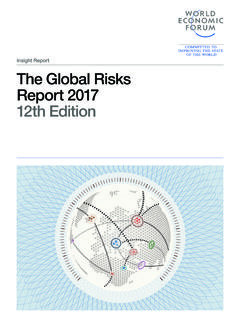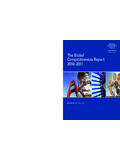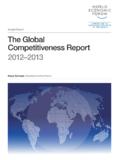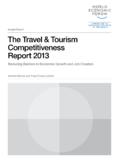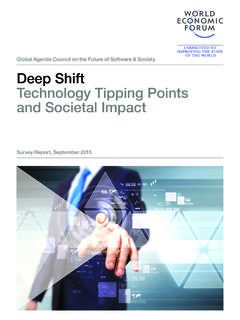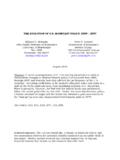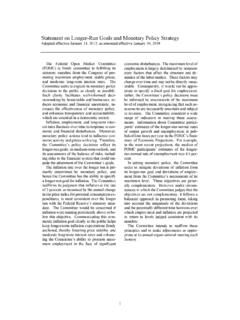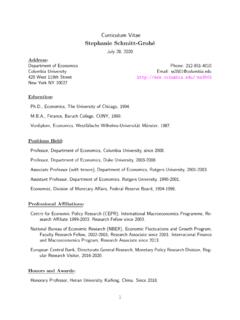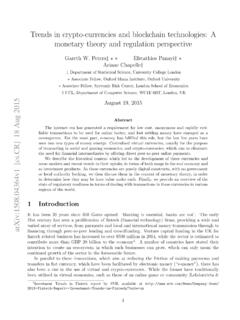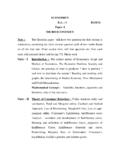Transcription of Global Future Council on Financial and Monetary Systems ...
1 Global Future Council on Financial and Monetary Systems The Global Financial and Monetary System in 2030. May 2018. World Economic Forum . 2018 All rights reserved. This white paper has been published by the World Economic Forum as a contribution to a project, No part of this publication may be reproduced or insight area or interaction. The findings, interpretations and conclusions expressed herein are Transmitted in any form or by any means, including Photocopying and recording, or by any information Storage a result of a collaborative process facilitated and endorsed by the World Economic Forum, but and retrieval system. whose results do not necessarily represent the views of the World Economic Forum, nor the entirety of its Members, Partners or other stakeholders. REF 310517. Council Co-Chairs Liao Min Director-General, Office of the Central Leading Cecilia Skingsley Group for Financial and Economic Affairs Deputy Governor, Swedish Central Bank (Sveriges Riksbank) Bill Michael Senior Partner and United Kingdom Chairman, Prof.
2 Axel P. Lehmann KPMG. President Personal & Corporate Banking and President of UBS Switzerland Min Zhu Chairman, National Institute of Financial Research Council Manager Elaine Smith Suzanne Nora Johnson Community Lead Banking and Capital Markets, Vice-Chair, Brookings Institution World Economic Forum Council Members Kari Olrud Moen Group Executive Vice-President, Strategic Prof. Patrick Augustin Projects, DNB. Assistant Professor of Finance, Desautels Faculty of Management, McGill University Olli Rehn Deputy Governor, Bank of Finland (Suomen Erik Bergl f Pankki). Professor and Director, Institute for Global Affairs Prof. H l ne Rey Lord Bagri Professor of Economics, London Khalid Al Bustani Business School Director General, Ministry of Finance United Arab Emirates Anne Richards Chief Executive, M&G Investments Karen Fawcett Non-executive director, adviser and entrepreneur Claudio Scardovi Managing Director, Alix Partners Gloria Grandolini Independent Adviser, Financial Development Prof.
3 Domenico Siniscalco Vice-Chairman, Italy Country Head, Government Prof. Michael Heise Coverage MENA (Morgan Stanley). Chief Economist, Economic Research and Corporate Development, Allianz Jeffrey Tessler Member of the Executive Board, Deutsche B rse Natalie Ann Jaresko Chairperson, Aspen Institute Kyiv Siddharth Tiwari Executive Secretary, G20 Eminent Group Adam Kansler Executive Vice-President, Financial Markets, IHS. Markit Jeromin Zettelmeyer Senior Fellow, Peterson Institute for International Essa Kazim Economics (PIIE). Governor, Dubai International Financial Centre (DIFC). Prof. Steffen Kern Chief Economist and Head, Risk Analysis, European Securities and Markets Authority Alice Law Shing-Mui Chief Operating Officer & Executive Director, Hong Kong Mandatory Provident Fund Authority The Global Financial and Monetary System in 2030 3.
4 4 The Global Financial and Monetary System in 2030. Contents 1. Introduction 2. Chapter 1: Regulation 3. Chapter 2: Digitization 4. Chapter 3: Macro Risks The Global Financial and Monetary System in 2030 5. Introduction The Global Financial and Monetary system is at a crossroads. Value to society A decade after the onset of the Global Financial crisis, the world economy is showing signs of recovery. Growth in The Financial system facilitates the efficient allocation 2017 was broad-based, accelerating in about 75% of all of capital and in doing so gives access to savings and countries. Boosted by a recovery in investment, Global financing solutions through safe payments Systems . It offers trade growth has rebounded from its low point in 2001. The Financial protection and the sharing and diversification of improved economic outlook, in an era of low interest rates, risks.
5 Broad and reliable access to Financial services is has boosted equity valuations and growth prospects for essential for a resilient real economy and social cohesion. 2018 and 2019 are also robust. The promise However, significant challenges remain. Based on per capita numbers, growth in almost half of emerging economies Successfully harnessing the two opposing forces of lagged behind advanced economies, and up to a quarter decentralization and integration can reinvigorate the Global of developing countries have seen declines. In addition, the Financial system and provide universal access to Financial labour share of income continues to decline globally, as services to fund real economic activity, manage wealth, and returns to capital increasingly contribute to Global incomes. diversify risks. Enhanced Financial inclusion could facilitate Thus, achieving inclusive growth remains the paramount a downhill flow of capital and a reduced reliance on debt objective.
6 Financing. A well-functioning Financial system is our best hope to solve the Global structural transformation challenge. The world community has agreed to the UN Sustainable Development Goals (SDGs), which are part of a broader Decentralization 2030 Agenda with specific milestones related to sustainable development. By any yardstick, the scale of what needs 1. The US dollar loses its pre-eminence to be achieved is exceptionally large, and the urgency Today's centralized Global Monetary and Financial system . of needed changes is exemplified by the weight of featuring a dominant US dollar mutates into a world with demographics and urbanization in the developing world. multiple reserve currencies and Financial powers of influence, The Global objectives of inclusive and sustainable growth mirroring the shift from the British pound to the US dollar place extraordinary demands on investment in infrastructure, as the reserve asset.
7 As economic importance traditionally much of it in countries that historically have not attracted leads Financial and Monetary pre-eminence, the euro and much international capital for this purpose. renminbi are likely to gain importance alongside the US. dollar and increasingly meet the world's demand for the The SDGs have to be met at a time when the international reserve currencies and safe assets. Monetary and Financial landscape itself is going through dramatic transformation: (1) new economic poles are 2. Decreasing use of paper money emerging; (2) power is moving away from public institutions Digital money issued privately or by central banks . to non-state actors; (3) accelerating technological changes and decentralized ledgers proliferate with implications are disrupting existing business models, threatening the for Monetary and Financial policy-making.
8 In countries, Future of jobs but also providing new opportunities that where changes are rapid, the growing fintech industry is were unimaginable a decade ago; and (4) demographics providing specialized Financial services using a range of are shifting. All this is happening in a political atmosphere digital innovations, including those that supply credit and still tainted by the Financial crisis of 2008 and decades of payments services to households and businesses through increasing inequality within most societies. online platforms. Acceptance and adoption of crypto- currencies will continue to spread. These developments In meeting these challenges, the Global Financial system has will bring together markets, institutions and infrastructure to balance two seemingly opposed forces: decentralization in a multi-polar, complex and interconnected world, which and integration.
9 To prevent excessive systemic disruption will challenge the conduct of Monetary policy and have and fragmentation, the international Financial architecture will implications for Financial stability. need to adapt. 3. Traditional bank business models will be challenged Fintech will transform traditional banks and insurance companies, with the emergence of newly decentralized entities providing liquidity and new Financial services in a disintermediated way. The development of new technologies will create new asset classes that directly match savers and borrowers and foster risk mitigation through the commoditization of Financial data but also lead to more fragmentation and dislocations. 6 The Global Financial and Monetary System in 2030. Integration supranational and national levels and a dynamic adjustment of rules and supervisory practices to ensure the coverage of 1.
10 Global Financial integration accelerates relevant Financial entities and activities. Powered by shifting demographics and new technology, the post- Global Financial crisis stall has been replaced by In this white paper, we single out three key aspects of the a new golden age in Global Financial interconnectedness, risks and challenges associated with the two seemingly promoting a more tight-knit network between countries, opposed forces of decentralization and integration, to enterprises and individuals in developed and emerging which the international Financial architecture will need to countries. A predicament for Global Financial integration is adapt. We organize the examination of these aspects into a collaborative political infrastructure. The emergence of three chapters that focus on regulatory challenges (Chapter political fragmentation and higher political uncertainty could 1), the transformation of the Financial system through pose a risk to the Global interconnectedness through higher digitization (Chapter 2), and current macroeconomic risks trade barriers or greater Financial protectionism.
